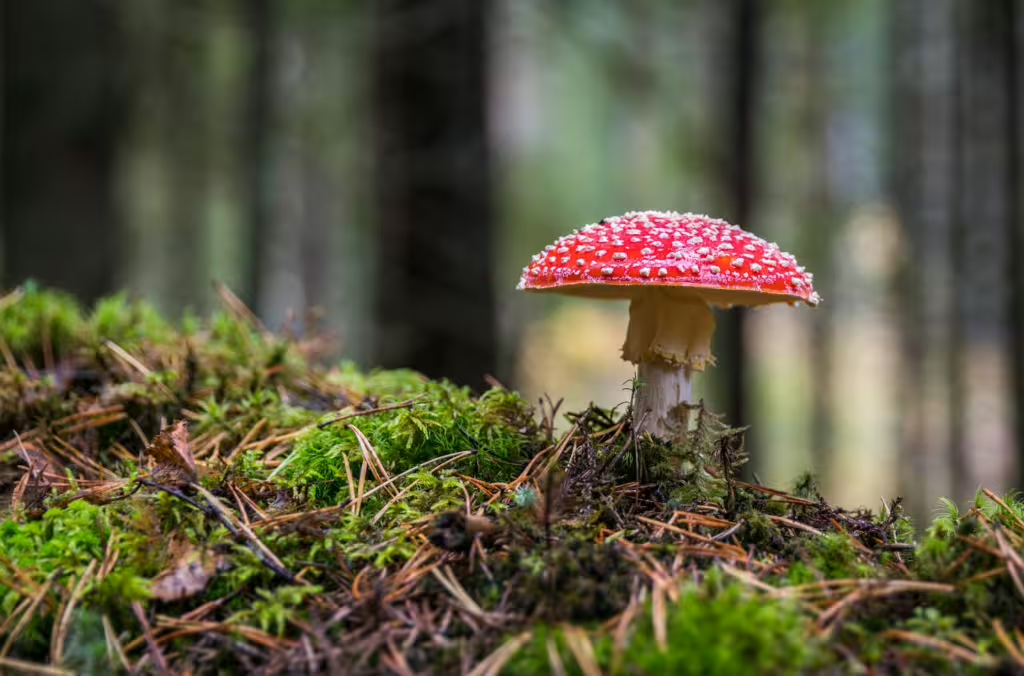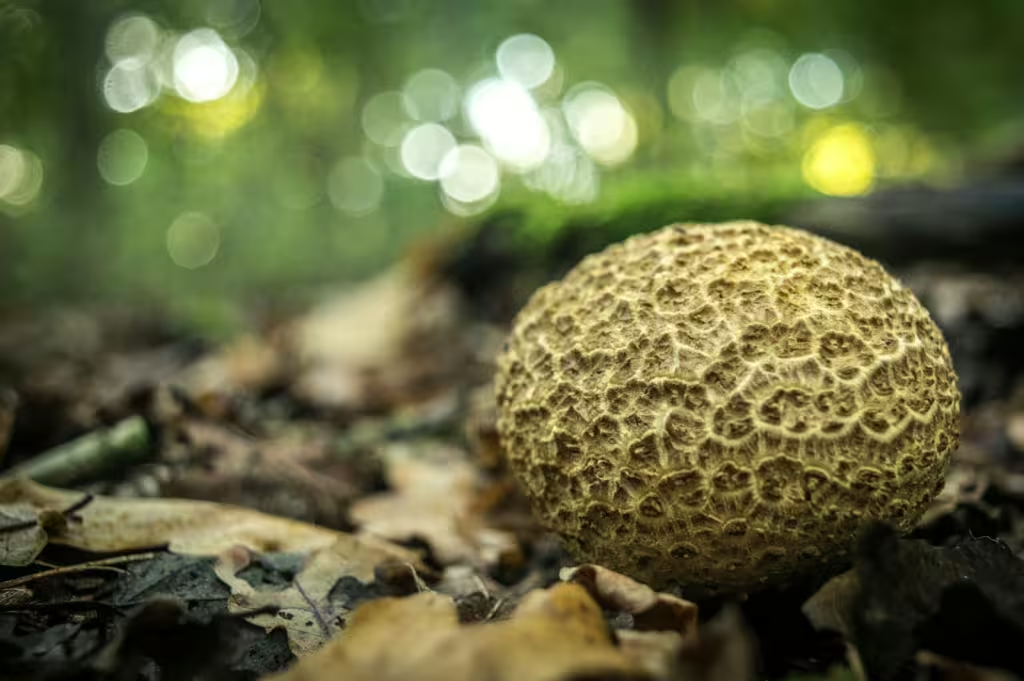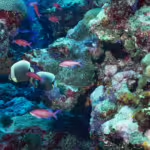Readers who have been unfortunate enough to witness the dystopian drama that is The Last of Us franchise are well aware of the destructive potential that fungi have in our collective imagination. Then again, home contractors could say the same thing—having always to deal with destructive and dangerous types of mold at every turn. Yet, stuck somewhere between the world-endlingly outlandish and the disastrously mundane, lies the fascinating truth.
While they may not all be as fantastic as cordyceps, the fungal kingdom is nevertheless one of the most fascinating and diverse groups of organisms on the entire planet Earth. We may categorize them among the plants for the purposes of this website, but they are really neither plants nor animals. There are also gads of them out there, more than 5 million estimated species, as it turns out. Though, to be fair, only about 150,000 of those have been described. Perhaps there are so many because, unlike certain plants and animals, fungi thrive in any environment—from dank rainforest floors to cliffs in the arctic tundra. They have also been observed in radioactive environments!
Beyond all that, fungi are actually critical pieces of their ecosystems. They may not always look like much but they help to recycle nutrients, form symbiotic relationships with plants, and even create vast underground networks that connect multiple species rooted in the surrounding habitat.
In this article, we will examine the important niche that different species of fungi inhabit within their respective ecosystems. As we venture into this fantastical and often unnerving world, we will explore a small sampling of the most amazing fungi on the planet, highlighting their biology, roles, and the mysteries that make them such a captivating topic for mycology enthusiasts everywhere!

The World of Fungi: An Overview
As we mentioned earlier, fungi are neither plants nor animals. They cannot photosynthesize to gain energy but absorb nutrients Unlike plants, fungi cannot photosynthesize; instead, they absorb nutrients from other organisms or organic matter. Most of the time, fungal bodies are composed of microscopic filaments called hyphae, which weave together into networks known as mycelium. This is all just a fancy way of saying that mushrooms are not as simple and colorful as they appear.
The fruiting bodies on certain mushrooms and puffballs are actually little more than reproductive structures. As a result, they tend to be rather short-lived when compared to fungi that dwell beneath the surface in mycelial webs. There are also molds, which are often just as ephemeral as their fruiting cousins, but also proliferate in similar ways to the rest of the fungal family.
Glowing Mushrooms
We begin our journey through the fungal world by explore what may be quite literally the brightest of the bunch. There are more than 80 types of bioluminescent fungi produce a greenish glow, though most of them can be found in the tropics. They do this by way of a chemical reaction involving luciferin, luciferase, and oxygen.
Mycena chlorophos
This glowing fungus is native to to Japan and Brazil, but can also be found in other tropical regions. It produces a brilliant glow that is visible even in moonlight. As with so many things in nature, there is a purpose to this unusual glow. The fungus uses the light it creates to essentially “pollinate” though not in the way that plants do. The bugs the light attracts land on the fungus and help disperse its spores when they leave.
Panellus stipticus
Some species of small, wood-decaying mushrooms can be found in more temperate regions as well. The panellus stipticus grows in North America, Europe, and Asia, its fruiting bodies clustered and glowing faintly on fallen logs. Though these mushrooms are not nearly as day-glo as others, they are one of the most widely distributed glowing fungi.
Fungal Behemoths
Some fungus are quite large, not simply in voluminousness but in sheer breadth of spread.
The Honey Fungus (Armillaria ostoyae)
In the vast hills of Oregon’s Blue Mountains lies one of the largest living organisms on the entire planet. The immense underground network of the honey fungus mycelium spans nearly 2,400 acres and is still expanding. Not only that, scientists believe the organism itself to be more than 2,000 years old! The problem with the honey fungus lies in the fact that it is a destructive force, a parasite that can cause root rot and damage huge swaths of forest.
Giant Puffball (Calvatia gigantea)
The giant puffball mushroom, on the other hand, is far more overt about its actual size. The enormous fruiting bodies of these mushrooms can grow larger than a basketball and can be found in meadows and forests across temperate regions. Puffballs can still contain trillions of spores in a single fruiting body, and will release huge brown clouds of powdery spores the instant something touches it a bit too hard.
The Dreaded Zombie Fungi
Ophiocordyceps unilateralis
Few fungi capture the imagination like Ophiocordyceps, the fungus that likely inspired The Last of Us franchise. Sometimes known as the “zombie-ant fungus,” this insidious fungus is found in tropical forests, where it worms its way into carpenter ants. Once infected, the fungus grows inside the ants’ bodies and alters their behavior, eventually compelling the ant to climb vegetation and clamp onto a leaf or twig in a “death grip.” When it finally succumbs, a stalk then erupts from the dead ant’s head, releasing spores to infect new victims.
This is a chilling example of parasitic manipulation but it is not the only one. There are several species of Cordyceps put there that have been known to infect caterpillars, beetles, moths, and other insects.
Beauty and Bizarre Form
Some mushrooms are so beautiful or helpful that they have wormed their way into our species’ collective unconscious.
Fly Agaric (Amanita muscaria)
You may not even realize it, but the fly agaric mushroom is perhaps the most iconic mushroom in the entire world. The telltale red cap and white spots on this fruiting body has inspired folklore, fairy tales, and even holiday traditions all over the world. Be warned though, this mushroom may look whimsical but it is very toxic and hallucinogenic, so keep your distance.
Lion’s Mane Mushroom (Hericium erinaceus)
The iconic Lion’s Mane mushroom is so-named for its resemblance to the shaggy mane of the King of Beasts. There is nothing ferocious or dangerous about this mushroom though, it is not only quite safe to handle, it is also safe to eat. Edible mushrooms that grow on hardwoods, the Lion’s Mane has gained popularity for both its striking appearance and its medicinal applications. In fact, modern research indicates that it may included certain compounds capable of stimulating nerve growth and improving cognitive health; though the jury is still out.

Symbiotic Superstars
Mycorrhizal Fungi
We have discussed the so-called “Wood Wide Web” on True Investigator several times. The fungal network that exists right beneath our feet is a prime example of the amazing symbiotic relationships that exist between plants and certain mycorrhizal fungi. In this partnership, the fungus provides its plant neighbors with water and nutrients in exchange for certain sugars that it cannot get on its own. There are even ecosystems where certain trees cannot survive without the cooperative influence of their fungal neighbors.
Truffles (Tuber spp.)
Many readers will at least be familiar with the taste of the world-renowned truffle. These rare and wildly expensive underground fungi aren’t just highly prized in culinary circles, they actually form mycorrhizal relationships with trees like oaks and hazelnuts. Interestingly enough, the strong aromas that truffles give off are meant to attract animals such as pigs and dogs, which dig them up and aid in dispersing their spores.
Deadly Sports
Many fungi are dangerous to eat or even touch and have been used by humans beings to make poisons and medicines for millennia.
Death Cap (Amanita phalloides)
Among the most toxic fungi in the world is the infamous death cap mushroom. This very dangerous fungus can be found in many areas where humans can also find safe, edible mushrooms. As a result, many a careless forager has ended up with a fatal meal by mistaking the mushroom for something innocuous. In fact, this aptly-named mushroom is responsible for the majority of mushroom poisoning fatalities in the world. It toxin kills via liver and kidney failure and a single cap is capable of killing a grown adult.
Destroying Angel (Amanita virosa and relatives)
A close relatives of the death cap is the all-white Destroying Angel. Whoever named these mushrooms definitely didn’t want to mince their meaning. The point is, don’t be fooled by their commonplace appearance. The Destroying Angel’s appearance belies its potency and, like the Death Cap, it is a prime example of why one should ALWAYS do their research before foraging for wild mushrooms!

True Investigator Says…
As you can see, fungi come in all shapes sizes and alignments! Some are destructive, near-immortal organisms that can devastate whole forests, while others require plants to live and help neighboring trees to survive and thrive. And the relationships between fungi and animals is just as much of a dichotomy. While some glowing fungus require bugs to spread their spores or smell strongly to attract animals, others need to use living creatures as mind-altered host bodies in order to proliferate their species. Healers, poisons, nutrient recyclers, symbiotes, and parasites; the fungal kingdom is as vast and varied as it is mysterious. Like so many amazing an unsung organisms on this planet, fungi remind us that our world is full of life, rife with roles, and adapted to survival in countless forms.
Discover more from TrueInvestigator
Subscribe to get the latest posts sent to your email.


